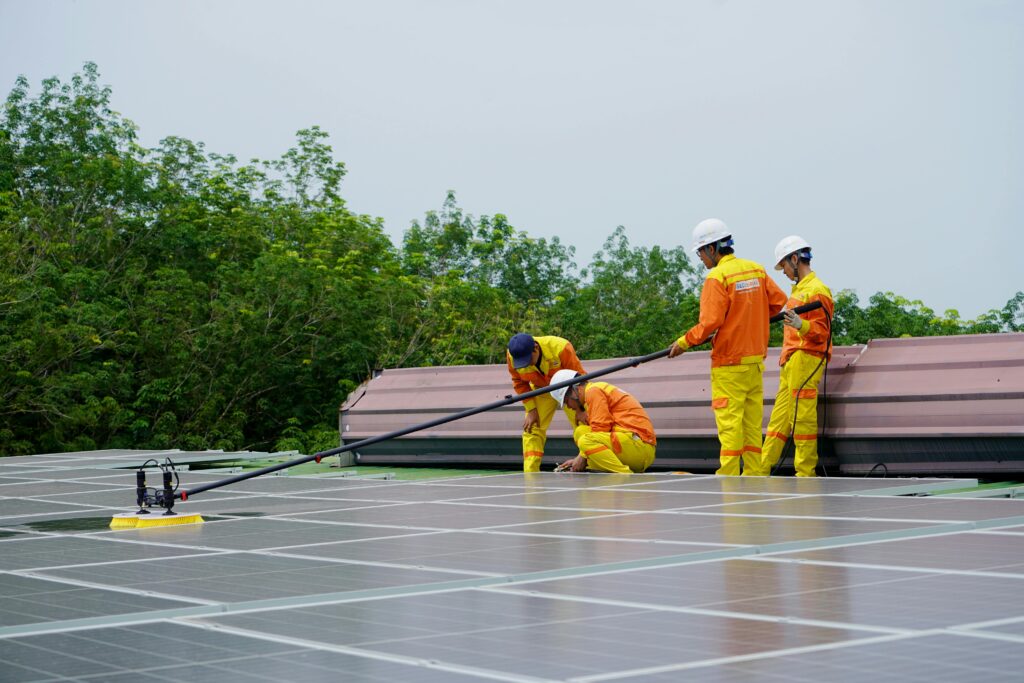As the demand for renewable energy solutions increases globally, solar power continues to lead the way in sustainable energy production. However, to maintain optimal performance and longevity of solar systems, predictive maintenance has become a critical area of focus. By leveraging Artificial Intelligence (AI) and the Internet of Things (IoT), solar companies and operators can ensure their systems remain efficient, cost-effective, and dependable.
The Importance of Predictive Maintenance in Solar Power Systems
Predictive maintenance refers to the process of utilizing data and analytics to predict when equipment will fail or need maintenance. For solar power systems, this means monitoring components like solar panels, inverters, batteries, and wiring to detect potential issues before they lead to a breakdown. In the context of solar, these failures can result in power loss, system downtime, and costly repairs. By predicting potential issues, operators can schedule maintenance activities in advance, preventing major failures and reducing operational costs.
How AI and IoT Transform Predictive Maintenance in Solar
1. IoT Sensors: The Backbone of Data Collection
IoT sensors play a critical role in gathering real-time data from solar installations. These sensors are embedded in various parts of the solar system, such as solar panels, inverters, and batteries, to collect data on performance metrics like voltage, current, temperature, and environmental conditions. For example:
- Solar Panels: Temperature and irradiance sensors monitor the panel’s performance and detect shading issues or dirt accumulation.
- Inverters: These devices monitor the operational status and efficiency of power conversion.
- Batteries: Sensors track charging and discharging cycles to optimize storage capabilities and prevent overcharging.
The data collected from these sensors is then transmitted to a central system, where it can be analyzed using AI algorithms to detect any anomalies or irregularities in the system’s performance.
2. AI for Predictive Analytics
Once data is collected from IoT sensors, AI comes into play. Machine learning (ML) algorithms can analyze vast amounts of data and identify patterns that indicate early signs of wear, malfunction, or environmental impact. These algorithms continuously learn and improve their predictions over time, providing operators with highly accurate maintenance schedules and forecasts.
Key applications of AI in predictive maintenance include:
- Anomaly Detection: AI models can identify abnormal patterns or sudden drops in performance, which may signal issues like faulty components, underperformance, or environmental interference.
- Failure Prediction: AI models can predict failures based on historical data, usage patterns, and environmental factors, allowing solar operators to perform maintenance before the failure occurs.
- Optimization: AI algorithms can optimize the maintenance schedule by identifying the optimal time for servicing equipment, reducing downtime, and improving system reliability.
3. Remote Monitoring and Automated Alerts
AI and IoT combined allow for remote monitoring of solar systems. By integrating these technologies with cloud platforms, operators can access real-time performance data from anywhere in the world. Automated alerts based on AI predictions can notify operators of potential issues, enabling quick decision-making and timely interventions.
For instance, if a solar panel’s performance falls below a certain threshold, an AI system can notify technicians immediately, reducing response time and preventing further damage. This minimizes the need for manual inspections and reduces labor costs.
Benefits of AI and IoT-Enabled Predictive Maintenance
The integration of AI and IoT in solar predictive maintenance brings several benefits:
- Cost Savings: Predictive maintenance minimizes unexpected repair costs by identifying issues early and scheduling timely interventions, thus avoiding costly emergency repairs or system replacements.
- Extended Equipment Lifespan: By predicting and addressing maintenance needs before they become critical, the lifespan of solar panels, batteries, and other components can be extended, offering better return on investment.
- Increased Efficiency: With optimized maintenance schedules and reduced downtime, solar systems operate at peak efficiency, ensuring consistent energy production and minimizing performance losses.
- Improved Safety: Predictive maintenance reduces the risk of major failures, fires, and other safety hazards associated with malfunctioning solar systems, making it safer for both operators and the environment.
- Scalability: The AI and IoT systems can scale easily across multiple solar farms or installations, making it an ideal solution for companies managing large portfolios of solar assets.
Challenges and Considerations
While AI and IoT-enabled predictive maintenance offer tremendous potential, there are still challenges to overcome:
- Data Management: Managing and processing the large volumes of data generated by IoT sensors can be overwhelming. It requires sophisticated systems for data storage, processing, and security.
- Initial Investment: Implementing AI and IoT systems can involve substantial upfront costs, including sensor installation and AI software development. However, the long-term savings from reduced downtime and maintenance costs usually outweigh these initial investments.
- Integration with Existing Infrastructure: Many solar installations may still rely on legacy systems that are not designed to integrate seamlessly with modern IoT or AI technologies. Upgrading or replacing old equipment can be a time-consuming and expensive process.
The Future of Predictive Maintenance in Solar
The future of solar energy will heavily rely on AI and IoT to drive more intelligent, autonomous systems. As the technology advances, we can expect more sophisticated AI models that can predict failures with even greater precision and optimize system performance across entire networks of solar farms.
Additionally, the integration of AI with other technologies, such as blockchain for secure data management and edge computing for faster decision-making, will further enhance the capabilities of predictive maintenance.
Conclusion
AI and IoT are transforming the way solar energy systems are managed and maintained. By integrating these technologies into solar installations, operators can reduce costs, increase system efficiency, and prevent downtime through predictive maintenance. The evolution of these technologies will continue to drive innovation in the solar industry, paving the way for smarter, more sustainable energy solutions. The question is no longer whether to adopt predictive maintenance technologies, but rather when and how to implement them to stay ahead of the curve.
References:
- https://pmc.ncbi.nlm.nih.gov/articles/PMC11722890/
- https://nano-ntp.com/index.php/nano/article/download/4028/3055/7630
- https://www.researchgate.net/publication/325185925_Anomaly_Detection_and_Predictive_Maintenance_for_photovoltaic_Systems
- https://www.researchgate.net/publication/351813534_AI_and_IOT-Based_Model_for_Photovoltaic_Power_Generation
- https://onlinelibrary.wiley.com/doi/10.1002/solr.202400473

